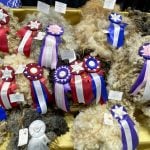As a new and vulnerable industry, elk producers want to avoid public criticism when it comes to humane animal welfare practices.
“We don’t know a whole bunch about the animals or even their husbandry,” said Duane Landals, veterinarian and registrar for the Alberta Veterinary Medicine Association.
“The industry is fragile,” he said at a recent livestock care conference in Calgary.
“The industry cannot withstand adverse publicity so it must do things right.”
Antler velvet removal is one potentially explosive issue.
Antlers are ground and sold as an alternative health product. However, the health benefits are said to be most effective when bull antlers are covered with a soft velvet and the tissue is still growing. There is blood and pain if the antlers are sawn off incorrectly. There may also be post-surgical pain and trauma.
Read Also

Beef cattle more prone to trace mineral deficiencies
The trace mineral status of our cows and calves is a significant challenge for western Canadian producers and veterinarians.
To address the treatment of farmed elk, Alberta became the only province to regulate velvet antler harvesting. All game farms must be licensed under the livestock diversification act. It is illegal to harvest antlers on the farm without a valid game farm licence.
The program came about because veterinarians classified antler removal as a surgical procedure.
Producers disagreed, arguing they should be allowed to do it themselves. They were concerned about the cost if a vet had to remove every set of antlers in a large herd, while vets worried the animals could be hurt.
Veterinarians agreed to a certification program if a series of requirements were met. Elk producers could remove antlers from their own animals if they were properly trained, followed a code of practice, used procedures accepted by the elk association and worked with a registered veterinarian familiar with the procedure.
Antler removal was controversial for several reasons. To deaden the antler area, some producers used electricity to paralyze the entire animal. The system came under heavy criticism and new methods were found after considerable debate within the industry.















